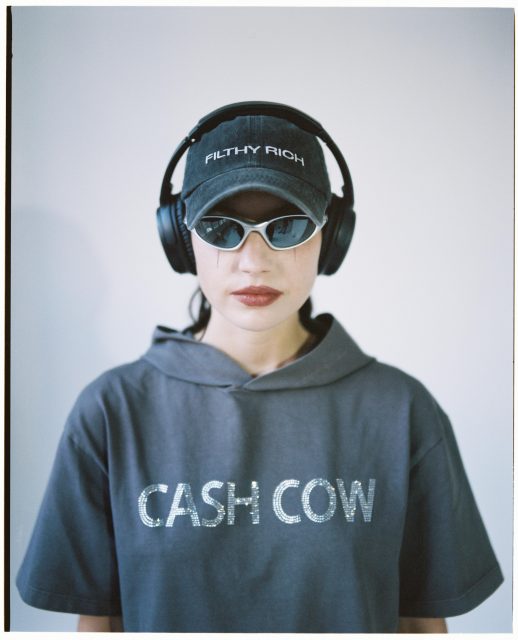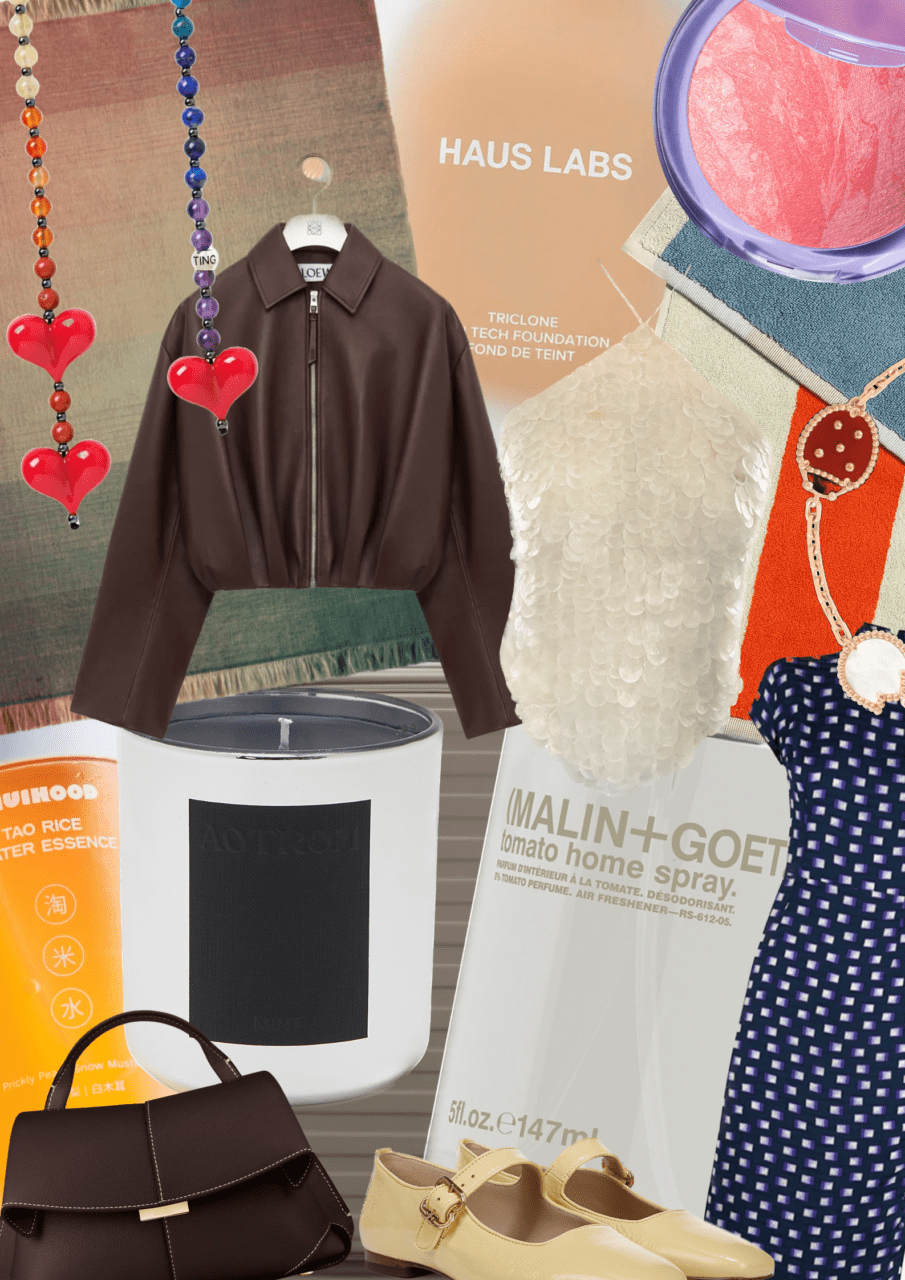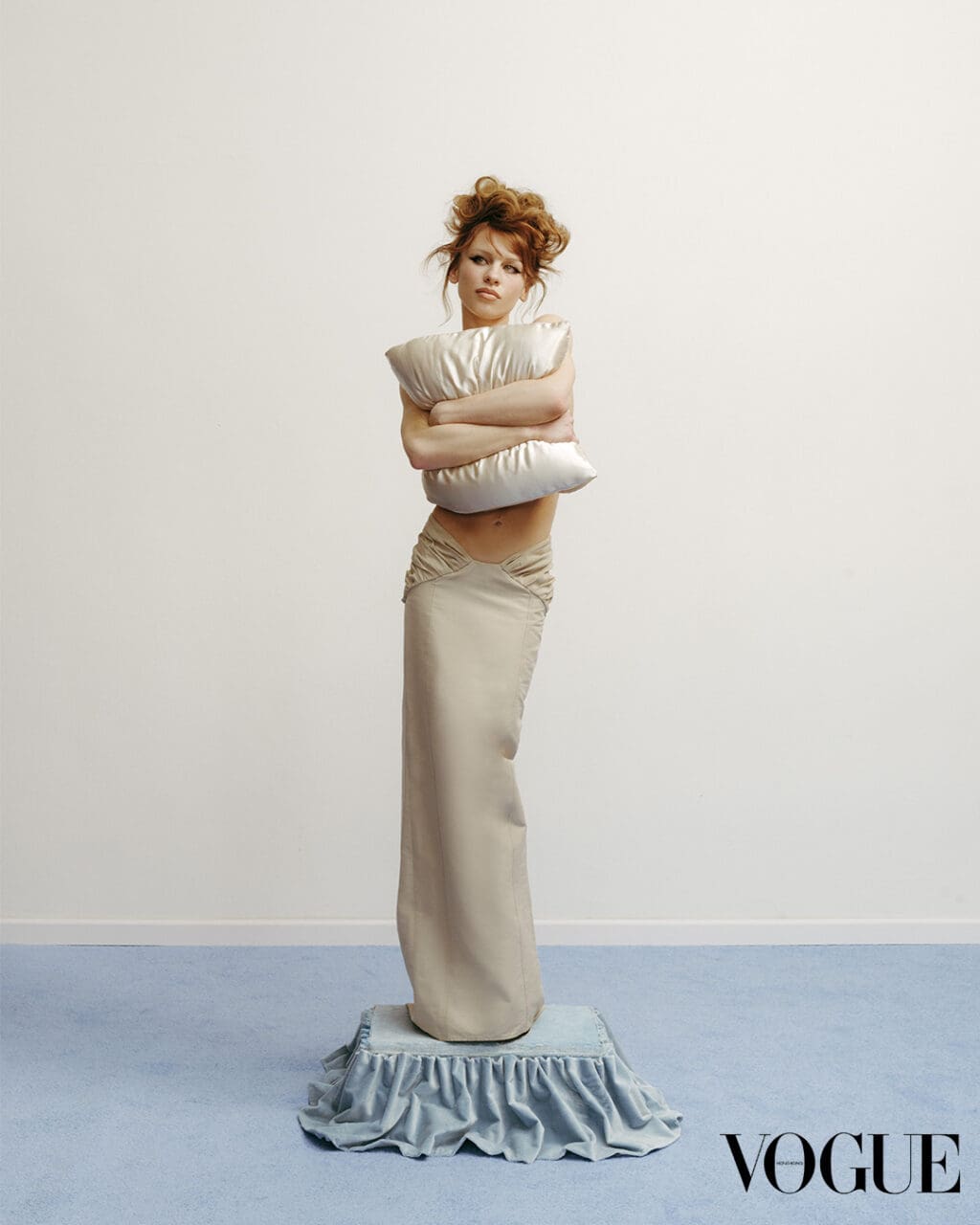Since 2004, H&M has been teaming up with designers from across the globe, producing limited edition capsule collections that are beloved for their high fashion designs reimagined for the high street. This year, the fast fashion giant has tapped emerging Korean label Rokh for their latest collaboration. Due to hit the shelves on April 18, 2024, the range will incorporate founder and designer Rok Hwang’s deconstructed and experimental edge into both womenswear and menswear pieces, as well as a number of accessories.
Born in Seoul, Hwang spent the majority of his teenage years in Texas before moving to the UK in 2003. He attended Central Saint Martins in London, graduating with a Bachelor’s degree in menswear and a Master’s in womenswear. He went on to work as a ready-to-wear designer in France, under the creative direction of none other than Phoebe Philo during her reign at Céline.
Having gained a wealth of experience from living and working in different cities, Hwang developed a distinct style. In 2016, the designer launched his own label Rokh, exploring the subtle nuances of gender by deconstructing and reconstructing traditional garments to produce pieces that are both versatile and elegant. This experimental approach earned him the Special Prize at the LVMH Prize for Young Fashion Designers in 2018, and international acclaim from the likes of Lady Gaga, Blackpink, and Anya Taylor-Joy. Now the designer has caught the attention of H&M, working with the brand’s creative advisor Ann-Sofie Johansson to present a new collection filled with stylish classics.
What’s the inspiration behind the H&M x Rokh collection?
Rok Hwang: The main theme of the collection that we wanted to focus on is this message of ‘Timeless’. For me the most important key factor is that I want the collection to be worn by real people, and then to be actually worn for a long time. We wanted to give something that is fundamentally very core and essential, so that each person can really wear it for a long time, rebuilding it with quality and value.
Where do you generally look for creative inspiration?
RH: Usually, I think my inspiration comes from the fittings. I like to cut, touch and retouch lots of garments. I tend to actually cut existing garments or you know, I’ll start cutting a pattern to create, let’s say, a trench coat, and then it just becomes a skirt. A lot of ideas are free-form. I think that during the make or work-in-progress of something, the inspiration comes right from it. It’s really just about being inside my studio and [working] with my own hands; when I’m building something, inspiration naturally flows through me.
Ann-Sofie Johansson: I think looking at people is, for me anyway, the best source of inspiration. [There’s] so many interesting people to look at, so many young people dressing in very fashionable ways—that is always good to see.
How do you incorporate a sense of femininity into more masculine silhouettes?
RH: I think some of the classic, kind of more masculine items do have a stereotypical image of something that is masculine. But I think in more recent society, the blazer has been worn by women, I feel, more than men. It has naturally become an almost essential piece for women. I think my role, my [nature], is wanting to rework certain garments. Let’s say tailoring for example, but we give it something sensual. We always work on the body. With a tailored jacket or blazer, we really work on a female body to build it and are very much hands-on with our pattern cutting, so that it really evokes the idea of something that is quite sensual and beautiful on a woman’s body. We really focus on the development of the fitting, and cutting the garment perfectly.
What criteria do you consider when selecting designers for the H&M collaborations?
ASJ: It’s not easy. There were a lot of discussions back in Stockholm with our team about who it should be. But the criteria is really that it has to be a designer we admire, that we think has a unique point of view and voice, and someone who can bring something new to our customers. Then also thinking about [our] customers; who would they appreciate us working with? We’re also thinking about if we haven’t worked with designers from a certain area or country. Maybe now it’s the time to work with a Korean designer…Or about time really, maybe we should have done so before. Taking a lot of different things into consideration, I would say we found them in Rok. There’s a uniqueness there with the kind of heritage he has with being a Korean designer, but also growing in Texas, studying in England, working in Paris and so on. It’s a very interesting background I think.
It’s also very much the timing—it really felt right now. We think that many people will love this collection, something super modern, contemporary, and still timeless in there. That mix of masculine and femininity with an edge is very special and appealing.
在 Instagram 查看這則貼文
You previously worked at Céline under Phoebe Philo. What was she like as a mentor?
RH: I think I learned most how to really perfect a garment, and appreciate women; to see how clothing could really [exist for] women, in the perfect way that [Phoebe can] because she is such a perfectionist. I think that also inspired me to construct the garment in a really perfect way and I still treasure that memory until now.
How has social media influenced Rokh and H&M’s marketing approach?
RH: That’s such a hard question. I think for me, at the beginning of the brand I was very focused on creating and making more exciting content for viewers. But I gradually realised that my viewers and my audience don’t spend so much time on social media, and so I somehow found that [social media] could be a little irrelevant to real life. From then I wanted to just concentrate my social media or platform into visual storytelling only. So it’s not really about the interaction, it’s just a small presentation of what we have done and what we are doing, kind of like a small digital book of what we do. So I want [our social media] to be a little less important, and then I want to focus my energy more into actually creating the garment and really communicating in real life with the audience. I’ve changed my strategy to be a bit more real compared to say, about two years ago.
ASJ: I think it’s a necessity for us; we need to be on social media because we know that our customers are very much on social media. So if you’re not there, it’s like you don’t exist, really. I think it’s also a matter of what it is. Is it a selling channel? Or is it something to build an image or a brand? Can it be both? I think we’re struggling a little bit there, but we are getting better. It’s a lot of trial and error first—that was the case for us anyway. There’s a lot of interaction on social media so it is a way of meeting customers. They can give their opinions straight away, good or bad. *laughs* It’s just a necessity and it’s very much a part of the fashion industry today, I would say.
How do you walk the line between creativity and commercial success?
RH: When we actually create the garments, I always focus my vision to be real. When we are cutting a garment, whether it’s extreme or not, conceptual or not, I think we always try to have it worn by real people during the fitting as well. So that’s something that I always try to [bring]—realness and how [the clothes] can interact with life. I think that automatically balances my collection.
What are your thoughts on the Asian fashion market?
RH: From my point of view, I think the world is getting smaller. I feel like style and the whole fashion movement has become very international. Even if you go to really different countries, you will find very relevant, fashionable people who are in a way similar, but in terms of styling, slightly different. But it’s really become more international, so it’s hard to say something is really Asian fashion now. It’s kind of become one.
ASJ: True, it’s not like it used to be when you travel for inspiration. We are a big global company, but when and where we can be local, we try to be that also because there are still differences and it’s a way for us to be closer to our customers in different countries. So we do special collections for Japan sometimes and for China, and special campaigns also. It’s also a courtesy I think, to the countries we are operating in. And we know that some of the holidays are really really special for people in different Asian countries, so it’s a matter of trying to see to that.
Any advice for young designers?
ASJ: We have a lot of young designers at H&M who [have come] straight out of school. We have to give support and encourage young designers today. For me it’s a lot about getting them to find their own voice and to see what is unique about their kind of creativity and way of designing. Try to find the uniqueness, try to go where no one else has gone before. You have to be brave to do that. So [we need to] encourage that kind of sense in them, to really [bring] out that person within them. Also, be patient, let it take time; you will learn things during your way to becoming whatever it is that you want to become. And be nice to people—I always say that as well because you never know when you’ll meet people again in another situation. I think kindness is something we should all be [striving for with one another], but I think it’s underestimated and underrated sometimes.
RH: Absolutely. I also agree but for me, I think advice I would give to designers younger than I am is that the key factor is to have a real kind of dedication, a passion for what you love because it’s a long journey. It’s a really long journey. Some people have a kind of quick and easy success, but then some really don’t. I think just [by] having that in mind while having a full dedication to what you really love and then continuously doing it, I’m sure everybody will find their own success in their field.
Translated by Alyanna Raissa J. Payos
Editor
Peggie Kei






